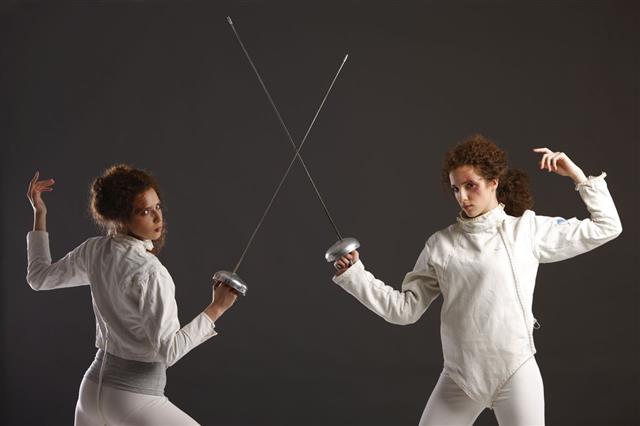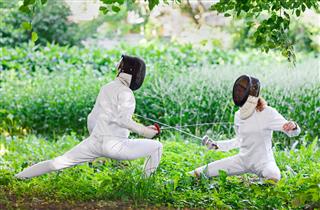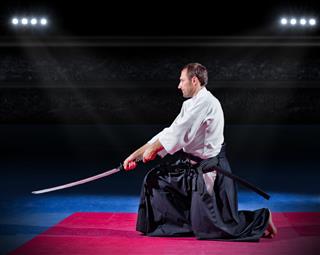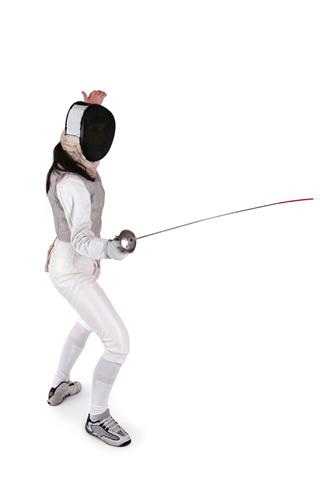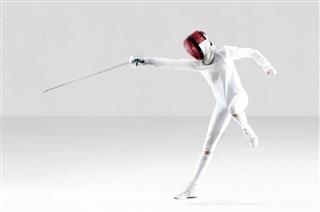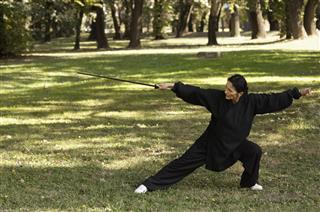
Swordsmanship is the art of killing with a sword. Over the centuries, many styles and techniques have been created and perfected.
Did You Know?
Swordsmanship was used to refer to only small sword fencing, but can now be applied to any martial art involving a sword.
Swordsmanship is the art of attacking and defending with a sword. The art has been popularized by its depiction in movies, and owes its prominence mostly to Japanese movies. But sword techniques have been a part of the Western world. The Medieval age is proof of the fact that swordsmanship was practiced diligently in the Western world.
Swordsmanship was first recognized as a sport by the gladiators, who fought to death in the coliseum. As time passed, the love for these steel blades grew, almost mesmerizing hundreds of onlookers to pick up the sword. Over the years, as swords came in varying shapes and sizes, so did the techniques involving them.
Fencing
Fencing, although now known as a sport, was a deadly martial art practiced by the Spanish and Italians. It was a technique brought to England by Domenico Angelo. This martial art taught only to the aristocrats. The main weapons used in fencing are the saber, foil, and épée.
Although fencing has been glamorized by Hollywood, and popularized by actors like Antonio Banderas and Errol Flynn, it was actually aimed to kill. Now, fencing exists as a competitive sport in the Olympics, where the person landing the first strike is awarded a point.
Offensive Moves
The lunge is the most basic move, and involves attacking the opponent by taking a step forward in a striking form.
The feint is a move in which you provoke the opponent into lunging or making a mistake, so you can attack first.
An attack is a thrusting attack made by extending the front leg, and propelling the body forward with the back leg.
A disengage is a move used to trick the opponent by attacking a specific target, and moving in a semi-circle arc to attack a different area. It is commonly countered with a circle-parry.
A remise is a second attack after the first has been parried or deflected.
A flick is a technique used to bend the blade so as to strike the opponent.
A beat Attack aims to beat the opponent’s blade continuously, and attack the target area with the intention of disturbing the opponent’s aim.
Defensive Moves
A riposte is counterattack made by the defender after a lunge. The defender either strikes back using a lunge or a parry.
A parry is a counterattack to lunge, and lets you block the attacker with his sword. In this manner, the attacker is pushed back, and the defender retains his position.
A circle parry is a move in which the sword is bent in a circular manner to catch the tip of the attacker’s sword and deflect it.
Broadsword Fighting
This is a Medieval form of fighting practiced with a broadsword and shield. Most of the moves are based on stances and quick sword attacks.
The feet should always be at a 30-degree angle, while the hips are cocked slightly to give support to the shield.
The sword should be held in the hand that corresponds to the trailing foot, and should be kept with the blade edge down.
Mobility is a good strategy to employ. Shift your weight in such a way that it’s concentrated on the balls of your feet, which gives you the advantage to move to either side at a moment’s notice.
Japanese Sword Fighting
Japanese sword fighting focuses on one-on-one fights. It has 3 basic styles – kenjutsu (Japanese way of the sword), battoujutsu (art of drawing the sword), and iaijutsu (a quick draw technique). You practice with a wooden sword, shinai, or bokken. Having said that, there are many styles that encompass Japanese swordsmanship, like Muso Jikiden Eishin-ryu, Hyoho Niten Ichi-ryu, Ono-ha Itto-ryu, Yagyu Shinkage-ryu, Jigen-ryu, and Tamiya-ryu, to name a few.
Japanese sword fighting advocates the practice of one-sword as well as dual-sword techniques.
Japanese Sword Fighting Moves
The most basic move is the forward slicing cut, that begins from the overhead position until it makes contact with the opponent’s shoulder or head.
The swing is executed by positioning the sword behind you, and making an arc to cut your opponent.
While practicing kenjutsu or kendo, the harai waza technique is used to flip the opponent’s shinai (wooden sword) with your own, and then strike him.
The maki waza technique of Japanese sword fighting, involves connecting the shinai with that of your opponent’s, and spinning the shinai in a 360-degree angle.
The basic strikes in kendo are do-uchi (a strike to the body), mein-uchi (a strike to the wrist), and kote-uchi (a strike to the wrist to disarm the opponent).
A quick-draw move of iaido is the nukitsuke, which involves drawing the blade to cut and place the sword back in its scabbard.
Two more groups of Japanese sword fighting iai techniques are the iwaza, which involves attacking while sitting, and tachi waza, which is used to attack while standing.
Hayasuburi is the technique of executing vertical strikes in the air.
Haidong Gumdo
This is the Korean way of the sword, and is based on the Japanese arts of battoujutsu, iaijutsu, and kenjutsu. Before practicing with a real sword, you need to practice with a wooden sword, called a Mok Gum. The basic techniques include begi (cuts), palkom (paldo), and chakkom (sheathing). It differs from the Japanese style of sword fighting, since Haidong Gumdo readies you to face multiple opponents.
Haidong Gumdo Moves
Haidong Gumdo Moves
Chungmyôn begi – center cut
Chao u begi – left-right cut
Ee-oh begi – continuous cut
Ollyo begi – upward 45-degree cut
Chwa begi – left cut
U begi – right cut
Sandan begi – a combination of left, right, and center cut
Bit kwang cha begi – 6 cuts
Yun-suk begi – multiple cuts
Makki – block
Hwengdan begi – horizontal cut
Nae-ryo begi – diagonal cut
Chirûgi – thrust
Naera – downward 45-degree cut
Dae gak begi – angle cut
Longsword
This is an art practiced using both the hands. It’s a very difficult technique to master, considering the size and weight of the sword. The attack moves are similar to fencing, which include the thrust, parry, and strike. The basic defense moves involve blocking and stepping.
Stepping
If your back foot passes your front foot in a passing step, it’s a burst.
If your front foot passes your back foot in a passing step, it’s a lunge.
Stances
The ox ward is a stance done by putting the left foot forward, and the sword held close to your face and aimed towards the upper regions of the opponent’s body.
The plow ward is a stance done by putting the right foot forward, and placing the sword near the knees, with the blade aimed at the opponent’s chest.
The fool ward is executed by beginning in a left foot forward stance, with the sword aimed towards the ground in front of the left foot.
Attack Moves
The high blow is a vertical blow against the opponent’s head.
The wrath blow is executed by swinging the sword from above, and diagonally aimed towards the opponent’s ear.
The middle blow is executed horizontally, either from left to right or right to left.
A low blow is executed by swinging the sword from below, and aimed towards the opponent’s arms.
The overhead thrust is a move in which you jab the opponent with the sword, single-handedly.
There are four slashes – the Oberhau, Unterhau, Zornhau, and Mittelhau. Oberhau is an upper strike launched from above. Zornhau is a diagonal upper body strike launched from above. Mittelhau is a middle strike launched from either side. Unterhau is a strike aimed from below.
Defense Moves
Voiding is a defensive move used to step either forward, backward, or sideways, out of the sword’s attack range.
Voiding a slash involves the same concept as voiding a thrust, with the added element of the arc of attack instead of the line of attack.
Uppercuts are voided by dropping the blade to your side.
Swords were the primary weapon that were used in any major battle or war, until they were replaced by the invention of guns in the Industrial era.








